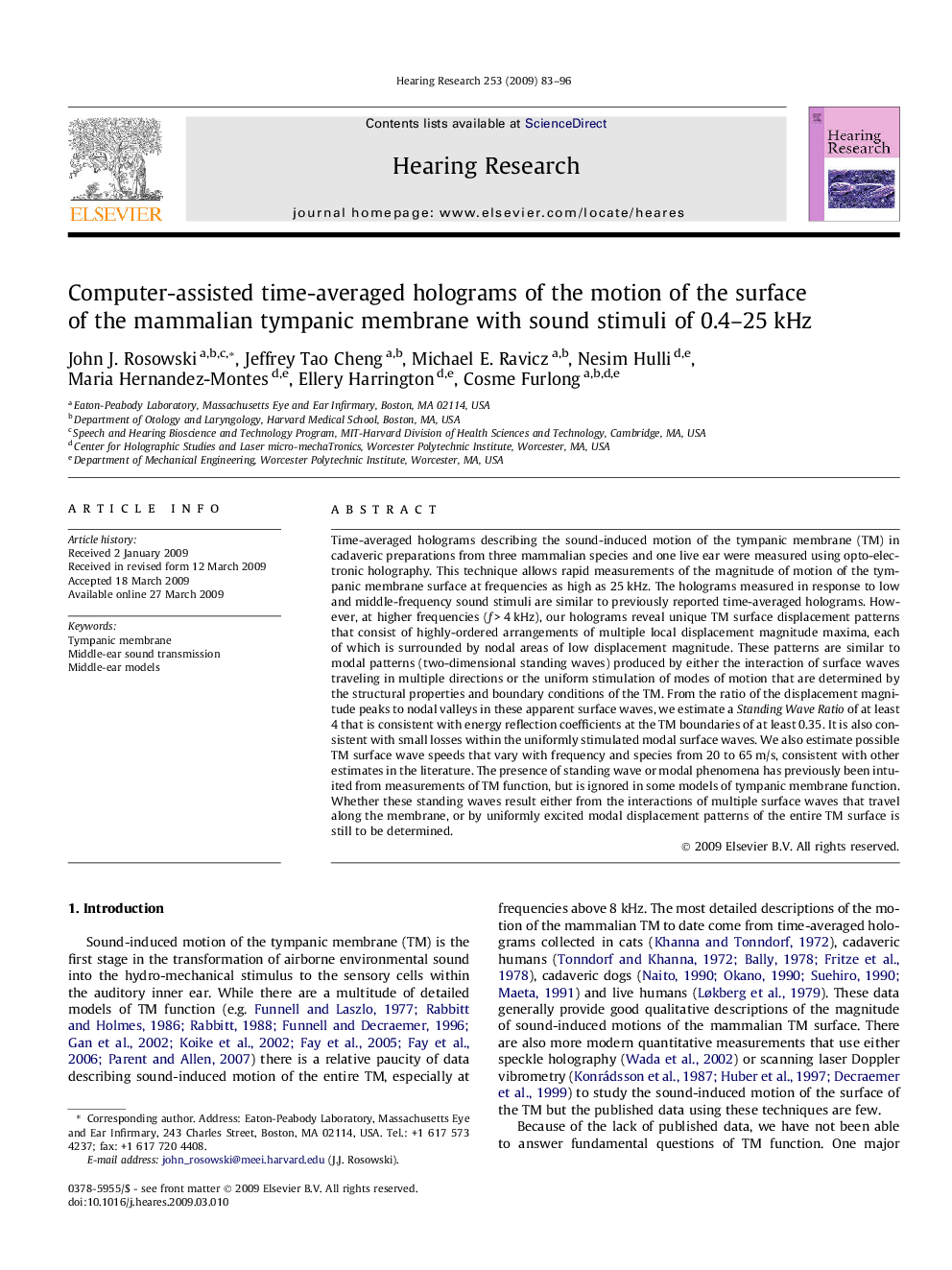| کد مقاله | کد نشریه | سال انتشار | مقاله انگلیسی | نسخه تمام متن |
|---|---|---|---|---|
| 4355937 | 1615647 | 2009 | 14 صفحه PDF | دانلود رایگان |

Time-averaged holograms describing the sound-induced motion of the tympanic membrane (TM) in cadaveric preparations from three mammalian species and one live ear were measured using opto-electronic holography. This technique allows rapid measurements of the magnitude of motion of the tympanic membrane surface at frequencies as high as 25 kHz. The holograms measured in response to low and middle-frequency sound stimuli are similar to previously reported time-averaged holograms. However, at higher frequencies (f > 4 kHz), our holograms reveal unique TM surface displacement patterns that consist of highly-ordered arrangements of multiple local displacement magnitude maxima, each of which is surrounded by nodal areas of low displacement magnitude. These patterns are similar to modal patterns (two-dimensional standing waves) produced by either the interaction of surface waves traveling in multiple directions or the uniform stimulation of modes of motion that are determined by the structural properties and boundary conditions of the TM. From the ratio of the displacement magnitude peaks to nodal valleys in these apparent surface waves, we estimate a Standing Wave Ratio of at least 4 that is consistent with energy reflection coefficients at the TM boundaries of at least 0.35. It is also consistent with small losses within the uniformly stimulated modal surface waves. We also estimate possible TM surface wave speeds that vary with frequency and species from 20 to 65 m/s, consistent with other estimates in the literature. The presence of standing wave or modal phenomena has previously been intuited from measurements of TM function, but is ignored in some models of tympanic membrane function. Whether these standing waves result either from the interactions of multiple surface waves that travel along the membrane, or by uniformly excited modal displacement patterns of the entire TM surface is still to be determined.
Journal: Hearing Research - Volume 253, Issues 1–2, 9 July 2009, Pages 83–96